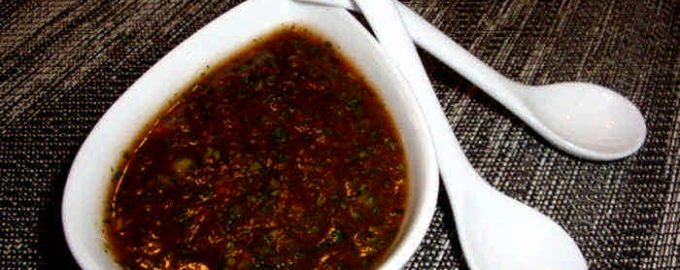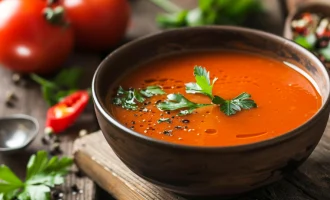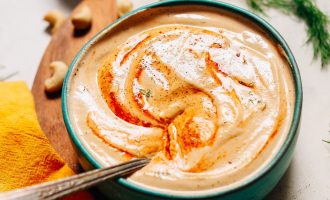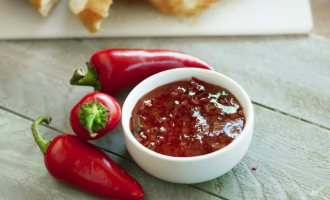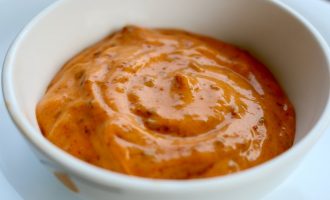- 3 tablespoons gochujang
- 1 tablespoon soy sauce
- 1 tablespoon sesame oil
- 1 tablespoon rice vinegar
- 1 tablespoon honey or sugar
- 1 clove garlic, minced
- 1 teaspoon grated ginger
- 1 teaspoon toasted sesame seeds
- 1 tablespoon water (adjust for desired consistency)
-
In a bowl, combine gochujang, soy sauce, sesame oil, rice vinegar, honey or sugar, minced garlic, grated ginger, toasted sesame seeds, and water.
-
Mix well until all the ingredients are thoroughly combined and the sauce is smooth.
-
Taste the sauce and adjust the seasoning if necessary. You can add more gochujang for spiciness, soy sauce for saltiness, or honey/sugar for sweetness.
-
If the sauce is too thick, add a little more water and mix until desired consistency is reached.
-
Transfer the bibimbap sauce to a serving dish or small individual bowls.
The sauce is traditionally served with bibimbap, a popular Korean rice dish. Bibimbap typically consists of rice topped with various sautéed and seasoned vegetables, sliced meat (usually beef), and a fried egg. The bibimbap sauce is then added to the dish and mixed together before eating. It adds a spicy and savory flavor to the overall dish.
In conclusion, the Korean bibimbap sauce is a hot and flavorful sauce made with gochujang as its main ingredient. It adds a delicious kick to the traditional bibimbap dish and complements the combination of rice, vegetables, meat, and egg. The sauce is easy to prepare and can be adjusted to suit individual taste preferences. Its spicy and umami flavors make it a popular choice among lovers of Korean cuisine.
Facts about the sauce:
- Gochujang, the main ingredient of bibimbap sauce, is a fermented Korean chili paste made from red chili peppers, glutinous rice, fermented soybeans, and salt.
- It is a staple ingredient in Korean cuisine and is known for its distinctive spicy and slightly sweet flavor.
- Gochujang is rich in vitamins, minerals, and antioxidants.
- The sauce can vary in spiciness depending on the brand and type of gochujang used.
- Bibimbap sauce can also be used as a dipping sauce for various Korean dishes, such as Korean pancakes (jeon) or grilled meat (samgyupsal).
- The sauce can be stored in an airtight container in the refrigerator for several weeks.

